Mike Carrick AMIOA, SIDERISE Technical Officer – Construction Acoustics, SIDERISE

Mike Carrick AMIOA
Introduction
Acoustics is an area of design that is often neglected and equally often approached as some form of ‘black art’. We rarely describe architecture in terms of sound. It is as if this sense has no bearing on our experience of the buildings we produce.
Indeed, when considering acoustic issues in the built environment, most people will simply switch off. With the extensive use of specialist jargon and the many ways of referring to the humble ‘decibel’ – i.e. Rw, Dnfw, DnTw, Dncw (to name but a few) – this is no real surprise. Acoustics can be very confusing with little practical guidance available.
Post your Requirement
According to a survey conducted by curtain walling manufacturer Sapa, solar control and thermal efficiency are architects’ top priorities in facade design, with acoustic performance coming fourth after appearance.
Results of Sapa architects’ survey*:
| Solar control | 6 |
| Thermal efficiency | 5 |
| Aesthetics | 4 |
| Acoustic performance | 3 |
| Integrated automatic ventilation systems | 2 |
| Integrated photovoltaics | 1 |
Information courtesy of Sapa Building Systems
As far as acoustics are concerned, the conceptual aims of any development fall into two categories. The first is the perception of the acoustics of the completed development in the eyes (and ears) of its occupiers and visitors. The second is the control of the acoustic impact on the surrounding environment – internal and external – so that the development can operate without fear of a valid noise nuisance action being brought. In delivering both, the designer must satisfy the legislative requirements as well as the client’s or end user’s ‘wish list’ of acoustic behaviour.
Scope
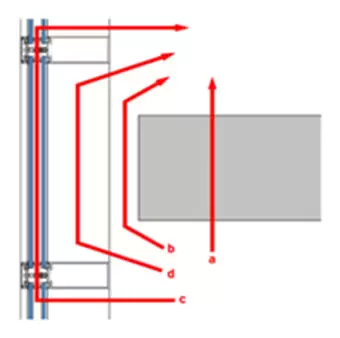
This technical paper will explain how acoustics should be incorporated into the design process to ensure that conceptual aims are successfully achieved. Specifically it will look at sound transmission between floors in a curtain walled building, in particular the common weak point formed by the movement joint at the floor slab edge. It will further detail the required properties of the seal, associated design considerations, regulatory criteria, common terminology, potential ‘sound paths’, sound transfer mechanisms and importantly how to mitigate sound transmission.
Whilst this paper covers a specific condition, similar problems, mechanisms and considerations can be applied in most areas of the built environment when considering ‘room-to-room’ acoustics.
Sound Transmission Paths – the Problem
- Direct sound transmission path
- Flanking sound transmission path via closure detail
- Flanking sound transmission path via facade glazing/ structural element
- Flanking sound transmission path via hollow mullion
The overall performance is potentially controlled by all the path components shown above.
Curtain Wall Buildings – A Problem of Conflicting Viewpoints
Facade Engineers: A curtain wall is an efficient non-structural element used to weatherproof a building.
Noise Consultants: A curtain wall is a lightweight structure. ‘Lightweight’ and ‘good’ acoustic performance does not go hand- in-hand.
A curtain wall is designed to resist air and water infiltration, wind forces, seismic forces, and its own dead load. Modern curtain wall systems can accommodate large amounts of movement without glass breakage or water leakage. This is achieved by maintaining a movement joint between the curtain wall façade and the structure of the building. The movement joint is effectively a gap or cavity between the ‘Slab Edge’ and the rear of the ‘Facade’ that needs to be effectively sealed to maintain the acoustic integrity of the building.
The seal employed would normally be expected to satisfy the following qualities:
- High levels of acoustic performance
- Fire rating to maintain compartmentation (both Insulation and Integrity)
- Ability to expand and contract with the cyclic movement of the facade
- Flexible to prevent continual direct mechanical linkage
- Provide an airtight seal
- Resist moisture/water
Floor-to-Floor Sound Performance
Who does it Affect?
Noise Consultants: When considering ‘room-to-room’ sound performance within the built environment overall performance is effectively controlled by the ‘weakest link’. This means that very careful consideration should be given to any potential weak point to ensure it does not become the ‘limiting factor’ in the overall sound transmission performance. The movement joint together with mullions and transoms should all be considered as such potential weak points and thoroughly assessed accordingly.
Facade Engineers: The facade engineer requires that any cavity seal does not impair the performance and movement of the facade which could ultimately result in failures within the structure.
Architects: It is important that the original design principles are maintained whilst fully complying with the relevant fire and acoustic regulations/criteria. Such compliance inevitably leads to a safe and pleasant environment for the buildings’ occupants.
Clients: Whatever the building type – offices, hotel, education or residential – ultimately the client requires a sustainable building that is fully robust and compliant to all building regulations and design criteria.
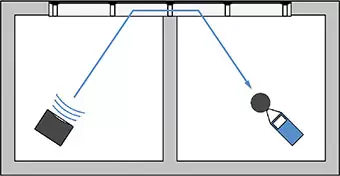
What Stage Should Acoustics be Considered?
It is all too common when considering the specification of the seal between the slab edge and the facade, for product selection to be based exclusively in terms of compliance to the relevant fire regulations. It is most important to consider in parallel the acoustic implications and performance of the closure arrangement.
Specification at Design: The cavity seal should ideally always be selected at the design stage. At this point, the largest range of suitable products is potentially available to the designer. Products can be selected based on cost effectiveness, ease of installation, acoustic performance, etc. Post or remedial treatment severely limits available product selection. Also it is invariably more expensive, less practical to install and may not always be fully compliant.
Post-site Testing: If the cavity seal is being considered following any form of on-site acoustic test, this would indicate that a non-compliant seal was initially selected at design stage. The cost of any corrective treatment is obviously additional to the initial installation. Such extra costs can be substantial due to limited product availability and restricted accessibility. Also penalties may be incurred due to delays to following trades and possibly a late handover to the client.
Post client occupation: Obviously the very worst scenario. Sound performance shortcomings identified at this time indicate a basic failure to meet the project’s acoustic design criteria. Remedial treatment is disruptive, unsightly, very expensive and possibly less effective (sometimes even requiring a performance compromise from the client). When the client’s expectations are not fully met, this reflects badly all the way down the line. Architect, facade consultant, noise consultant, main contractor, sub contractors, suppliers are all potentially adversely implicated, resulting in a loss of money, reputation and commonly repeat business too.
Legislation and Valid Test Data
Building Regulations – The Requirements
Residential: Approved Document E (ADE) covers the building regulations for all new residential buildings in England and Wales. The requirements sets out that either a property is registered and built to a ‘Robust Standard Detail’ (using ONLY RSD products) or constructed using alternate techniques and materials. In the latter case compliance to the performance criteria is confirmed by ‘Pre-Completion Testing’ (PCT), where a sample number of dwellings are tested by a UKAS (The United Kingdom Accreditation Service)or ANC (Association of Noise Consultants) accredited Noise Consultant. There are NO Robust Details for Curtain Wall residential properties, therefore ALL curtain wall buildings must demonstrate compliance by means of PCT.
Education: Building Bulletin 93 (BB93) covers the building regulations for all schools in England and Wales. Whilst schools in Scotland, sixth form buildings, higher education colleges and universities in the UK are not covered by the regulations, most are still designed to meet the BB93 standards. The separation performance values vary significantly depending on the type of adjoining rooms (classrooms, library, music rooms, etc.). In consequence a floor separating two general classrooms would require a lower performance than that between say a music room and library.
Office Spaces: There are no acoustic building regulations applying to office spaces. The performance criteria is generally selected by the project noise consultant based on the particular requirements of the client/occupier. British Council for Offices (BCO) and World Health Organisation (WHO) recommendations may also influence this decision process dependant on proposed/possible activities in these spaces.
Industrial Units: There are no regulatory acoustic requirements applicable to Industrial Units. Performance values are generally selected by the project noise consultant based on the individual requirements of the client/occupier. The performance of the building envelope may be affected by local council limits for background noise levels (BCOs and EHOs). Noise at Work Regulations (NAWR) and the World Health Organisation (WHO) recommendations may also influence the setting of the final performance criteria.
Compliance – How?
When considering the vertical transmission of airborne sound energy (floor-to-floor), the applicable criteria (regulatory or otherwise), will usually be in one of the following forms:
- dB DnTw – a final site measured value
- dB Rw – a laboratory tested value for a component
- dB Dnfw – a laboratory tested value for a system
- dB DnT(mf),w – relates to education (BB93)
where dB = decibel, D = difference, n = normalised,
T = reverberation time, R = reduction, f = flanking, mf = mid frequencies, w = frequency weighted
It is essential to understand the important and significant differences between the above in order to validate or otherwise prove potential compliance.
In general site measured values cannot match those recorded in a sound laboratory. The difference will vary depending on the method of test and actual performance levels, but a guide 5dB minimum practical difference is commonly quoted.
Acoustic Performance
Comparative Variations
Further comparative variations may also arise from fundamental differences in the nature of the tests as well as how results are then finally expressed (e.g. some are adjusted to a 10m2 reference area).
By way of an example, to achieve a 45dB DnTw (final site measured value) the floor slab would normally need to offer a minimum Rw performance of 50dB and the facade 50+dB Dnfw.
Acoustic Assessment
The movement joint seal between the floor slab edge and the rear of the facade can be viewed and assessed for acoustic performance in two quite different ways.
It may be considered as being an inclusive component of total facade flanking transmission. This approach requires testing for each known facade variant with a range of differing typical project cavity widths (necessary as the width of the seal directly affects its acoustic significance).
Alternatively, it may be considered as a simple extension of the floor slab. This method, with reference to known Rw data for both the floor slab and the closure detail, permits the calculation of an overall RAV floor value.
This is achieved by means of a simple of a composite SRI calculation using the formulae:
A curtain wall facade should always be tested in a UKAS accredited laboratory. The acoustic data obtained will normally be in the form of a Dnfw.
Copies of the test certificates for the exact (or at least very ‘close’ constructions) will be required by a project noise consultant to confirm compliance.
Floor slabs should always be tested in a UKAS accredited laboratory. The acoustic data will normally be in the form of an Rw value.
Alternatively, the noise consultant may have access to library test performance data for the particular floor construction employed.
Product selection
Perimeter Barrier Fire Seal Properties
There are many fire seal products available claiming compliance to common fire standards. However, other equally important characteristics and properties of the seal should be carefully considered when undertaking product selection: sound transmission performance, ability to expand and contract with the facade’s cyclic movement, a proven fire performance (both integrity and insulation) when abutting deforming structures, provision of an effective smoke seal, resistance to moisture/water and ability to provide a flexible closure limiting possible flanking transmission.
When considering the sound transmission characteristics, it is essential that accurate test data is available for the seal itself and common combined closure arrangements. Without this information, validation of performance compliance is impossible.
Over decades organizations like SIDERISE has invested extensively in comprehensive acoustic testing at UKAS accredited laboratories. This helps the hard data for supporting, with great accuracy, almost any potential performance criteria.
Other Relevant Variables
Gaps and Poor Fit: Overall acoustic performance can be significantly degraded due to gaps or a poor fit arising from inadequate workmanship or an unusual/complex local detail. Careful attention should be paid to ensure a continuous seal for both the fire seal and/or any applied acoustic upgrades.
Additional Sound Path Elements: When calculating the seal’s minimum performance requirements, it is prudent to ignore possible contribution for other common intervening elements such as a suspended ceiling. Their performance cannot always be relied upon, due to either a local absence or degradation arising from light fittings, ventilation, etc. It should instead be considered as an added safety factor for final compliance.
When validating performance by the ‘extension to floor slab’ method the following information is required for the composite SRI calculation:
- Relevant performance criteria in dB and form (Rw, DnFw, DnTw, etc.)
- Typical room depth and cavity width
Fire-safe Insulation
- Floor construction (particularly the rc slab thickness)
- Any reliable additional path elements (raised access floors, dwarf walls, high mass bulkheads, etc.)
In general terms, the following rules apply when considering the minimum required SRI performance of the fire seal closure arrangement:
- The larger the cavity width and/or the thinner the slab – the higher the seal’s required SRI performance.
- The smaller the cavity and/or thicker the slab, the lower the seal’s required SRI performance.
SRI Performance Variations
Typical Variations
The following examples show typical variations in the required minimum fire seal SRI performance:
Calculations
All three examples are calculated based on a room depth of 4m, a performance criteria of 45dB DnTw (or alternatively 50dB DnFw for the facade).
They assume that the general flanking performance offered by the facade construction is adequate to meet the overall performance criteria.
The required minimum performance variations for the seal arise only due to the changes to the slab and cavity dimensions shown.
*Curtain wall bracket omitted from drawings for clarity
In these three examples, the cavity fire seal closure was likely to represent the performance limiting factor given the required minimum SRI values indicated. However, by the
application of specialist high mass acoustic upgrades to the fire seal, substantial improvement to the closure performance is possible.
Closure Performance Variations
Possible Variations
The following examples show possible variations in closure performances based on adding various upgrades and their effect in terms of the maximum achievable overall DnTw values:
Calculations
All three examples are calculated based on a room depth of 4m, a 250mm thick rc slab, a 200mm cavity width and a facade offering a 55dB DnFw flanking transmission performance.
Figure 7 uses a SIDERISE CW/FS120 fire stop alone (tested 25dB Rw performance). The maximum overall performance achievable is calculated at 33dB DnTw.
Figure 8 uses the SIDERISE fire stop together with an applied SIDERISE AB10 flexible overlay (tested 37dB Rw performance). The maximum overall performance achievable is calculated at 44dB DnTw.
Figure 9 is as Figure 8 above but additionally includes a SIDERISE CVB/C10 high mass slab below (tested 51dB Rw performance). The maximum overall performance achievable is calculated at 49.7dB DnTw. This represents a drop of only 0.3dB from the maximum performance achievable from this construction which is calculated at 50dB DnTw using standard assumptions.
Other Issues
Assessment
Assuming the following important assessment steps have now been undertaken:
- Floor construction performance assessed as adequate for direct airborne sound transmission – sound path (a) below.
- Typically this requires a floor Rw performance at least +5db above the DnTw design criteria value.
- The minimum sound transmission requirement of the fire closure detail has been calculated to ensure sound path (b) below is not limiting final performance.
- This value is then compared against that actually offered by the selected fire stop (or fire stop plus acoustic upgrade if required).
It is now finally necessary to consider the flanking sound transmission paths (c) and (d) below:
- Direct sound transmission path
- Flanking sound transmission path via closure detail
- Flanking sound transmission path via facade glazing/ structural element
- Flanking sound transmission path via hollow mullion
Flanking Transmission
Flanking transmission is used to describe any non-direct path of sound transfer. Total flanking transmission comprises a number of potential individual transfer mechanisms.
One of the most important is generally referred to as structure- borne sound transmission. When sound impinges on a facade’s face, this physically excites the facade inducing bending waves. This energy is transferred to any adjacent areas where it is re- radiated from the facade’s internal surfaces.
Many factors potentially influence structure-borne transmission in a curtain wall facade. These include: stiffness, surface mass, span distances and discontinuity. Most of these characteristics are fundamental to the individual system selected. In consequence, most major manufactures can advise probable Dnf,w values for various glass weights, mullion/transom sizes, framing centres, etc.
This value effectively provides a basic performance assumption for the paths (c) and (d). However, due to minor design differences it may be prudent to effectively eliminate path (d) as a potential performance limiting mechanism.
SIDERISE Solutions
Product Selection
When considering flanking sound transmission via a hollow mullion (d), we are basically concerned with sound penetrating the mullion wall, travelling via the continuous hollow section to an adjoining room where it subsequently exits.
SIDERISE offers an extensive range of potential solutions in the form of SIDERISE mullion and transom inserts. These include the SIDERISE MI5 foam baffles which are sound absorptive products, cut to short lengths (typically 300mm or 600mm) which are then simply inserted into the mullion at the floor line. They offer a level of insertion loss sufficient to practically eliminate this potential sound transmission route. Alternatively a SIDERISE AVC is available. Commonly at floor lines the curtain wall system will include a twin transom detail with an intermediate spandrel panel.
This arrangement does not normally represent a potential weakness for sound transmission through these transoms. However, when the design includes for only a single transom (typically with the fire seal abutting the rear of the transom or an intermediate flashing section) then the transom and its acoustic properties should be considered most carefully.
The Rw performance of a typical aluminium transom (200mm x 50mm) is circa 28-32dB. To estimate the approximate acoustic implications of this value, the 200mm wide surface area can
be included in a composite floor calculation. Should the result demonstrate a failure to meet the design criteria, this would indicate a need to up rate the performance of the transom by the addition of an acoustic treatment.
This can be effected by the application of an outer cladding or often more conveniently by insertion into the hollow section of the transom.
SIDERISE offers a high mass product, the SIDERISE MI6 insert for this purpose. Whilst more usually used in the treatment of mullions at partition abutments (for horizontal sound transmission) it is equally suited to treatment of a transom.
The tested performance of this arrangement for a 200 x 50mm section increases to 41dB Rw. This substantial improvement can dramatically alter the resultant performance limits indicated by a composite SRI calculation.
Case study: London 2012 Athletes Village
The Challenge
When the London 2012 design team wanted a third party accredited ‘firestop’ with ‘tested’ high acoustic performance to close the movement cavity between the rear of the facade and the partitions and floor slabs, Siderise was their only choice.
This most prestigious event in London, the 2012 Olympic Games, demanded performance levels that not only met, but exceeded the criteria demanded by Building Regulations ‘Approved Document E’.
Maximum Performance Levels
The project required that the final choice in material solution had to be a third party accredited Fire Stop, and able to provide proven/tested levels of acoustic performance to achieve the criteria which was set at 5dB above current Building Regulations.
Independent UKAS accredited laboratory data was required before the product could be finally approved.
The Solution
We provided SIDERISE CW-FS curtain wall fire stop system with acoustic upgrades from their acoustic product range.
Horizontal Application: For the horizontal application CW-FS120, a two hour perimeter barrier firestop was used with a mass barrier overlay of the BM/P5/BOAK/SA and two layers of acoustic composite SIDERISE acoustic void barriers below.
Vertical Application: For the vertical application SR/MF160/BOAK in conjunction with two lines of both SIDERISE linear gap seal and SIDERISE acoustic void closures – AVC/10’s.
A Sound Result
The project demanded a rigorous program of Pre Completion Testing. The SIDERISE solutions met and exceeded the performance criteria.
THE SIDERISE SOLUTION
- SIDERISE cavity barrier (CW-CB) or SIDERISE fire stop (CW-FS)
- Metal spandrel with SIDERISE Nexus lamella
- board core SIDERISE acoustic barrier overlay
- SIDERISE acoustic void barrier
Acknowledgement
This article is authored by Mike Carrick AMIOA, SIDERISE Technical Officer – Construction Acoustics. He could be contacted at +44 (0) 7917 327797; Email: mike.carrick@siderise.com.
For more information, you may also get in touch with Andy Kay, SIDERISE Global Facades Manager, at +44 (0) 7767 201302; Email andrew.kay@siderise.com or with Sreenivas Narayanan GENTECH Product Manager, at +971 501002433, Email snarayanan@gentech.ccGENTECH – Member of General International Group Dubai, UAE, P.O. Box 38259’ T +971 4 338 3599; F +971 4 338 3799;
References
- Building Regulations (England and Wales), Approved Document E Resistance to Sound
- Centre for Window and Cladding Technology, ‘Standard for Systemised Building Envelopes’, (2006)
- *Sapa Building Systems, Survey on trends in facade design and the architectural environment, (2013)


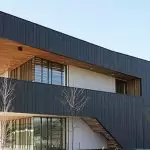
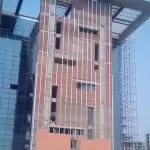
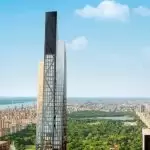


















Post A Comment